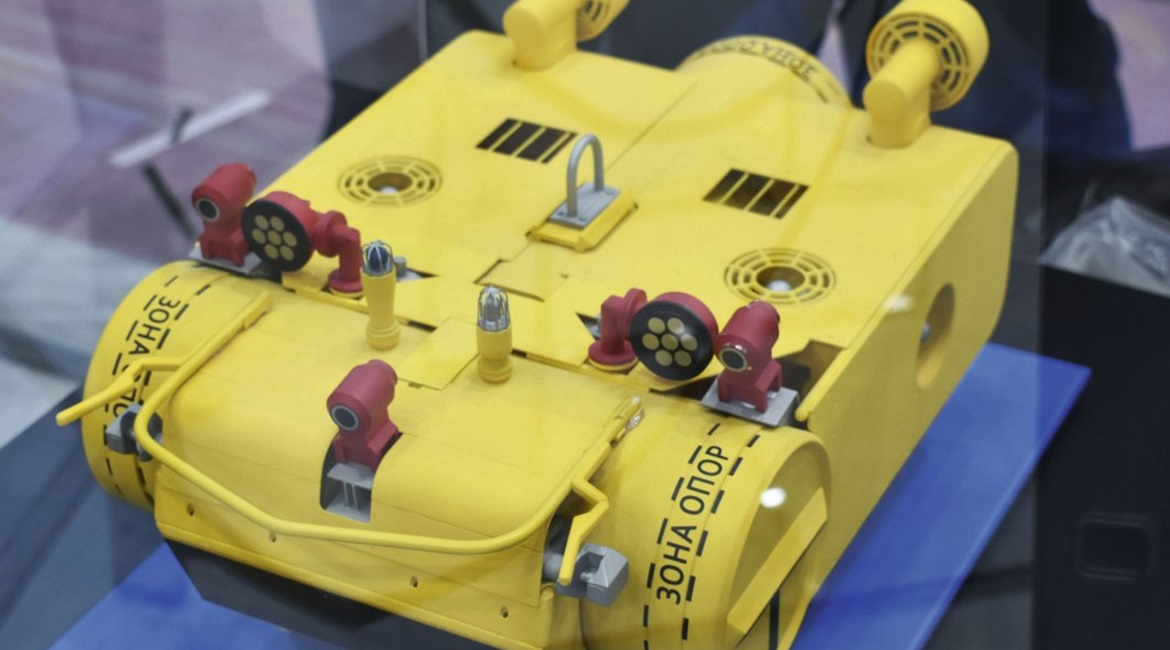
Russia’s GNPP Region, a subsidiary of the Tactical Missiles Corporation (KTRV), has unveiled its ISPUM/ISPUM-E (Integrated System for Search and Destruction of Mines) shipborne mine countermeasures system for the Russian Navy’s Project 12700 Alexandrite-class mine countermeasures vessel (MCMV) and its export-oriented variant, the Project 12701.
The company demonstrated the system for the first time at the International Maritime Defence Show 2019, which was held in Saint Petersburg in mid-July.

A scale model of the Alexandrite-ISPUM-E MCM system’s unmanned underwater vehicle. (Dmitry Fediushko)
According to the manufacturer, the Alexandrite-ISPUM-E comprises an unmanned underwater vehicle (UUV) with a modular payload, a towed vehicle, marking buoys, control systems, a shipborne retractable ventral sonar, electrically driven wrench with optical-fibre datalink cable, and other support devices.
It can be operated by a three-person crew comprising the UUV pilot, mission systems specialist, and ship sonar operator.
The towed vehicle has been fitted with low- and high-frequency antennas and serves as an additional sonar that can be deployed in complex hydro-acoustic environments.
An MCMV fitted with the Alexandrite-ISPUM-E can therefore employ three sonars, which are integrated with the platform, the UUV, and towed vehicle. The ship can employ its ventral sonar at the same time with the towed vehicle at a speed of up to 6 m/s, although this is reduced to 3 m/s when the UUV is operating.
The towed vehicle and the UUV can operate at depths of 150 m and 300 m, respectively, while the latter has a control radius of up to 500 m and can function in Sea State 3 conditions. Both components have received multifrequency sonars, with the UUV carrying a 3D one.
Looking to read the full article?
Gain unlimited access to Janes news and more...




